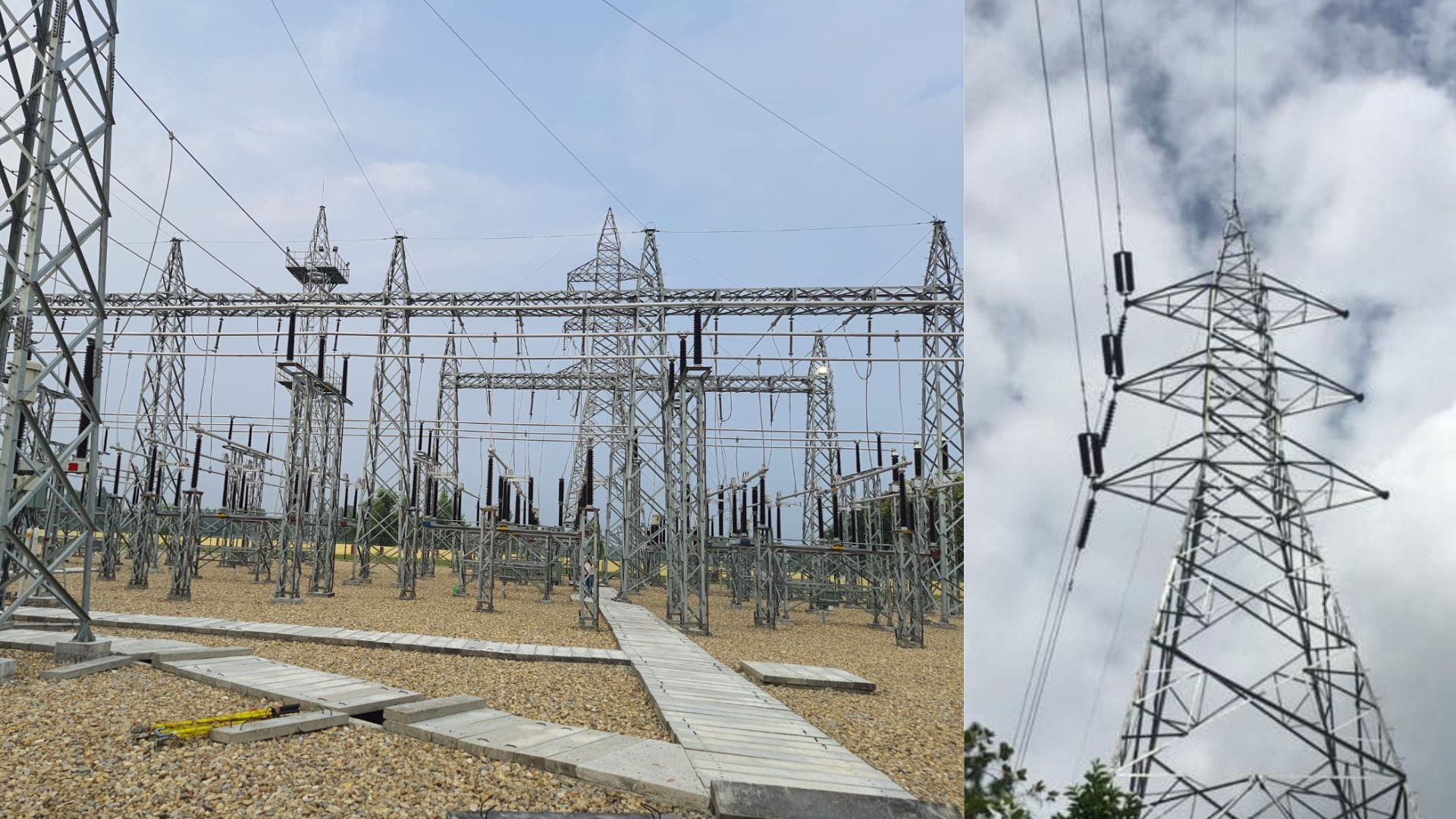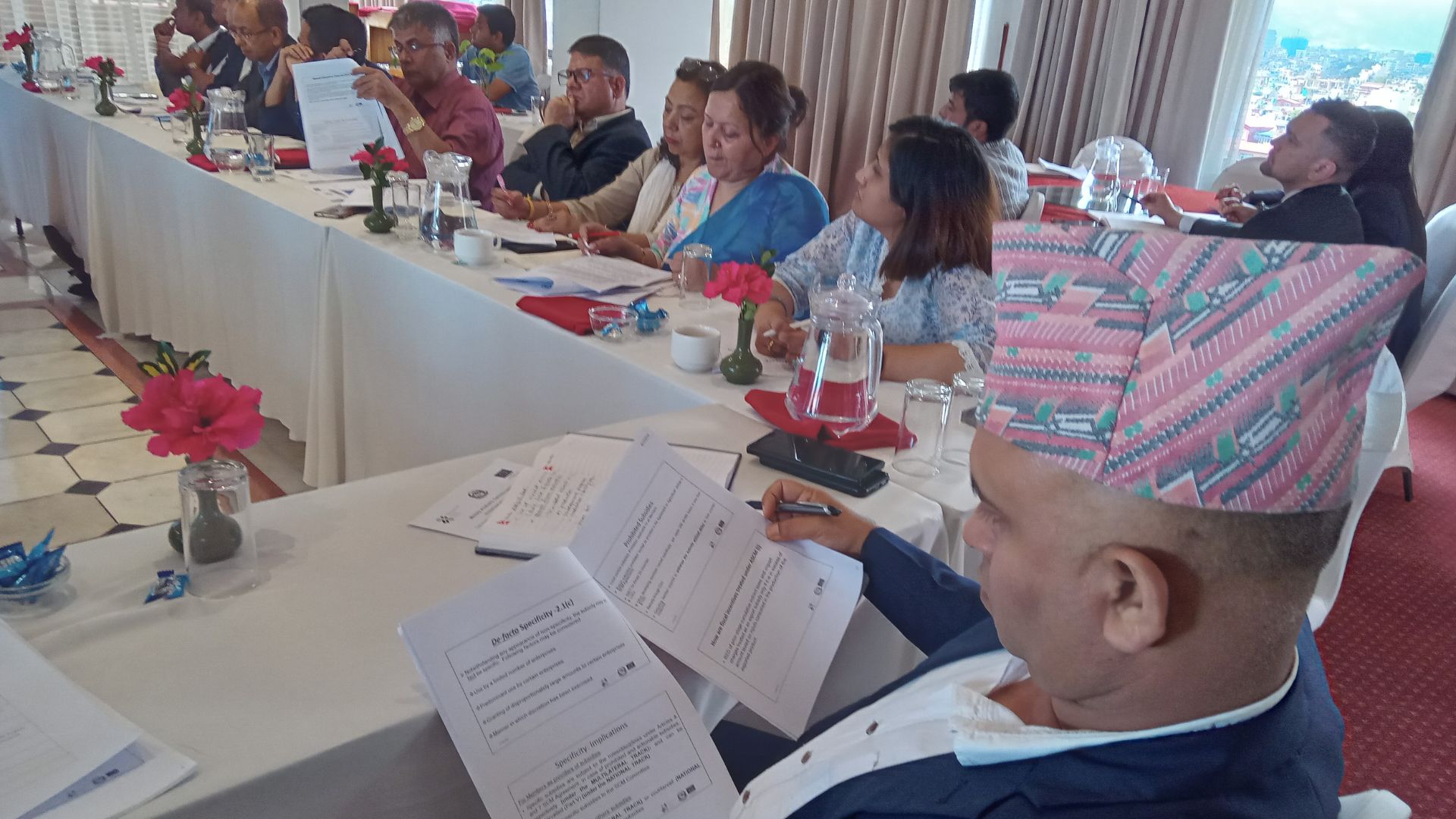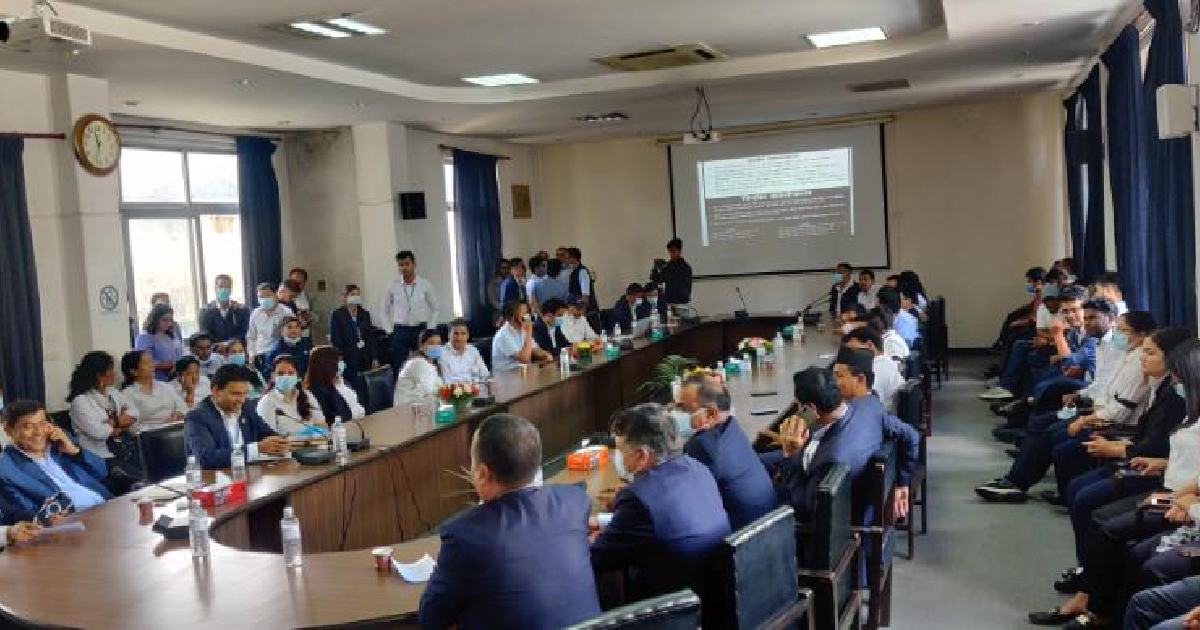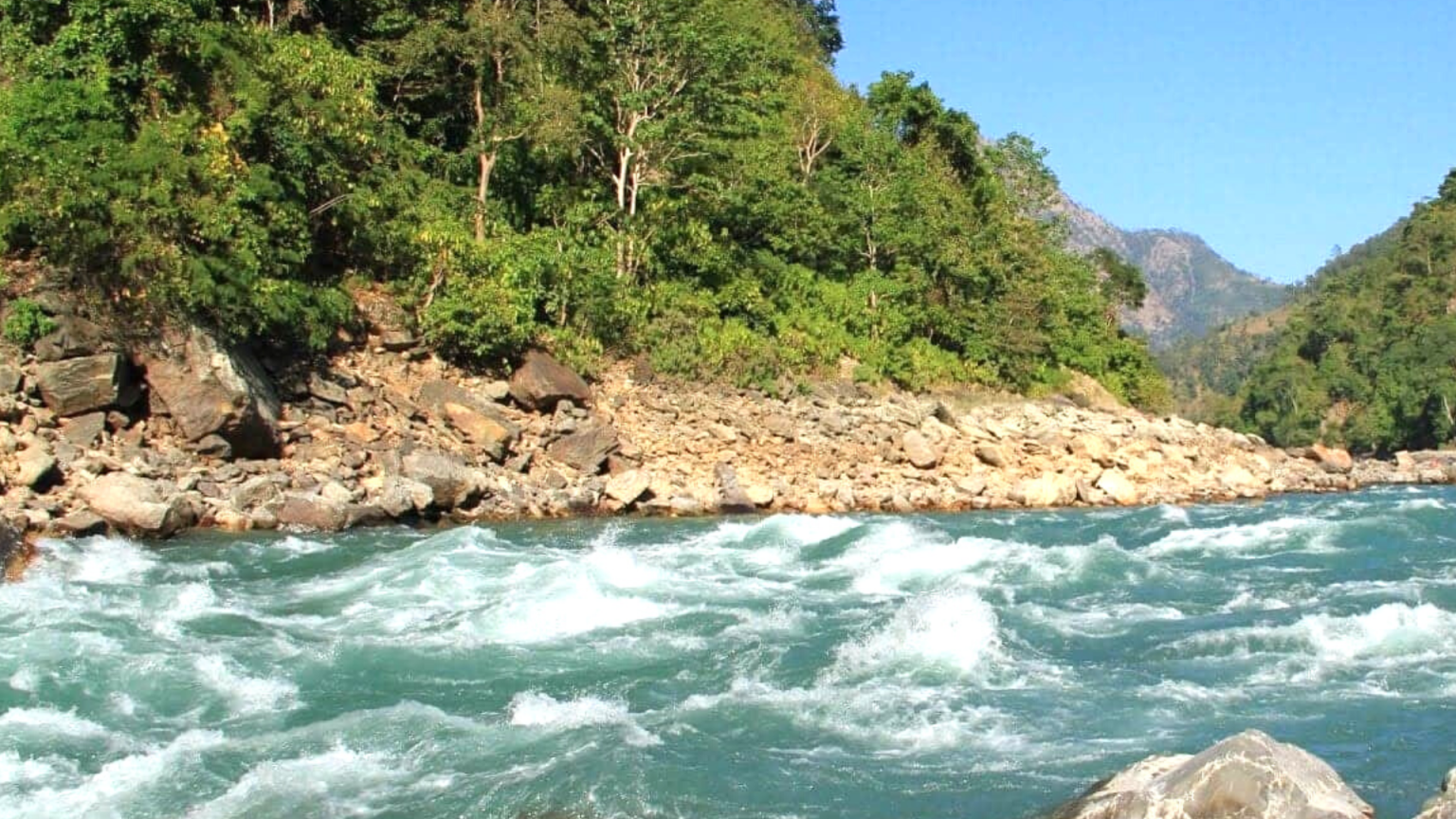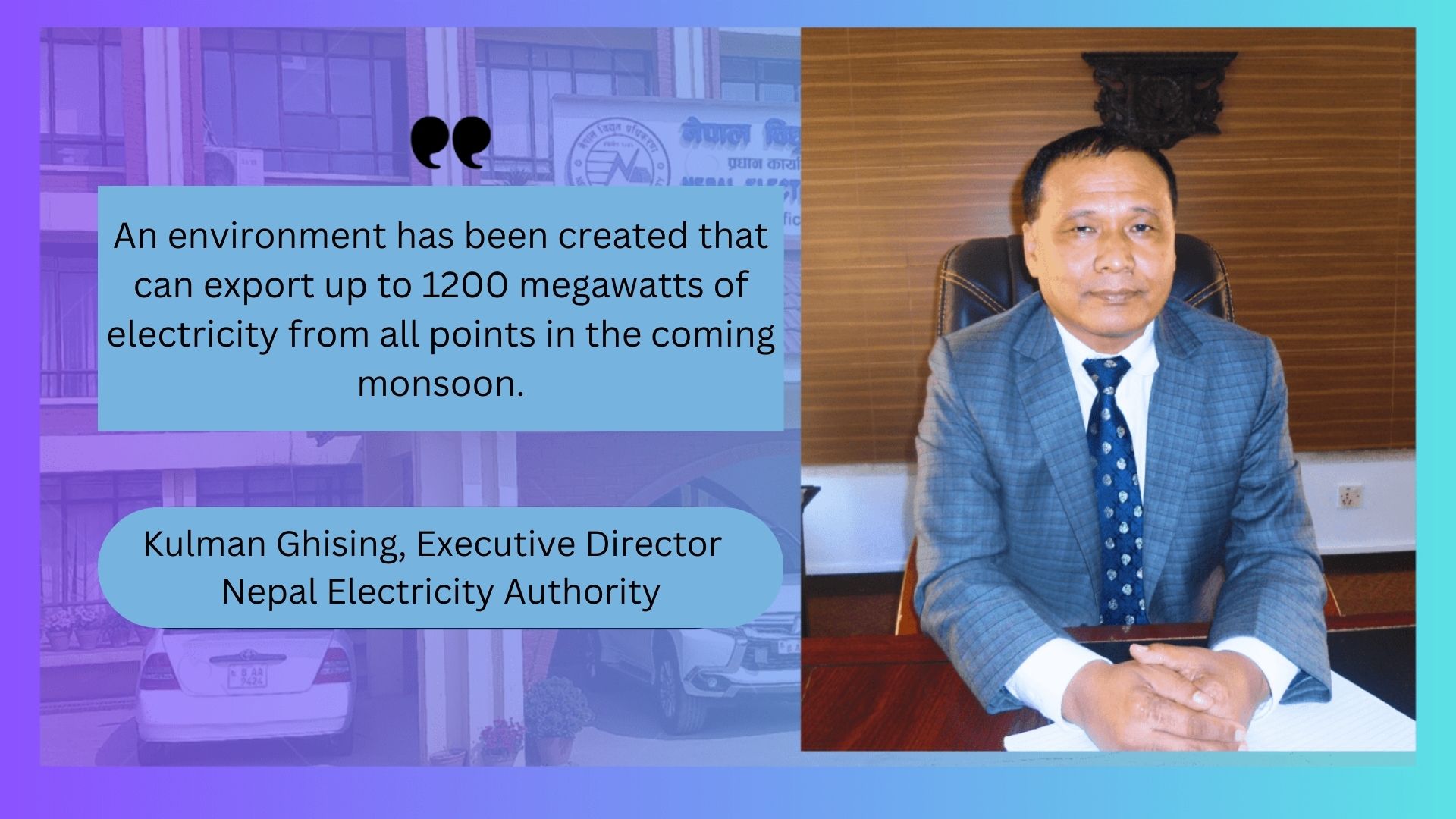

Nepal Electricity Authority is now faced with the challenge of expanding the internal and external markets as the electricity connection capacity of the national transmission system increases. Although the management of the electricity authority is saying that by expanding the transmission and distribution lines, the environment is being created to increase domestic consumption and bring the electricity that is not consumed within the country to India and Bangladesh, there is concern and suspicion that all the electricity of monsoon will not be able to find a market. Especially independent energy producers who invest in hydropower are already worried that all the electricity will not be sold during the rainy season.
What kind of preparation is the electricity authority making to manage the market when it still has to be imported to balance the supply management in monsoom and all the electricity produced in the dry season cannot be consumed within the country?
A brief conversation by Bhim Gautam and Dhana Dhakal for Nepal Infrastructure.com with Kulman Ghising, Executive Director of Electricity Authority, on various topics including electricity generation, consumption growth and preparation and challenges of international electricity trade:
Recently, an important meeting between Nepal and India related to energy has ended. Has the electricity authority’s concern that electricity will be wasted in monsoom gone? How much electricity is likely to be exported in the coming monsoon?
After the then Prime Minister Sher Bahadur Deuba’s visit to India last year, electricity trade between Nepal and India has progressed in a positive direction. As a result of this, the electricity authority has earned foreign currency by selling electricity worth 11 billion rupees in the competitive market of India during the last rainy season. Recently, in the energy secretary level meeting held in India, important decisions were made between the secretary of the Ministry of Energy, Water Resources and Irrigation on behalf of Nepal and the secretary of the Ministry of Energy of India regarding the electricity trade between the two countries. I believe that it will also contribute significantly to the expansion of electricity trade between Nepal and India. After that, a ‘Power Exchange Committee’ meeting was held between the Central Electricity Authority of India and the Nepal Electricity Authority. This meeting also made some important decisions regarding the international electricity trade. ।
While a maximum of 600 megawatts of electricity was exported from the Dhalkebar-Muzaffarpur international transmission line last year, it has been agreed to export up to 800 megawatts this year. An environment has been created that can export up to 1200 megawatts of electricity from all points in the coming monsoon. At the same time, we are also advancing the construction of new high-capacity international transmission lines that are planned. The 400 KV Butwal-Gorakhpur international transmission line is now in the process of construction. Apart from this, an agreement has been made with India to build Lamki-Bareli and Inaruwa-Purniyan international transmission lines.
In this meeting, the buying and selling rate has been determined for trading electricity between Nepal and India’s Border States. Nepal has agreed to prepare a modality within a month to import and export electricity through the 132 kV international transmission line passing through the border points with Bihar and Uttar Pradesh states. This is also an important achievement in the field of electricity business. Till now we were exporting power to India only through 400 KV Dhalkebar-Muzaffarpur inter-country transmission line. Now, in the coming monsoon, the Electricity Authority is trying to export electricity to India not only from Dhalkebar-Muzaffarpur, but also through 3 transmission lines connected to Bihar.
This year, Nepal’s electricity will be exported to India from the Tanakpur point in the farwest. This agreement has been reached with India. While a maximum of 600 megawatts of electricity was exported from the Dhalkebar-Muzaffarpur international transmission line last year, it has been agreed to export up to 800 megawatts this year. An environment has been created that can export up to 1200 megawatts of electricity from all points in the coming monsoon. At the same time, we are also advancing the construction of new high-capacity international transmission lines that are planned. The 400 KV Butwal-Gorakhpur international transmission line is now in the process of construction. Apart from this, an agreement has been made with India to build Lamki-Bareli and Inaruwa-Purniyan international transmission lines. An agreement has also been reached with the Indian side to export 50 megawatts of electricity from Nepal to Bangladesh as a token. All these agreements are important for the expansion of Nepal’s electricity trade. As these important people are creating a suitable environment for electricity business, Nepal’s electricity will not be wasted in the coming monsoon. Even if there is a situation where electricity is wasted due to technical problems, it will not be wasted due to failure to export.
There is always talking about the possibility of Nepal’s electricity being sold in the Indian market. India is also under great pressure to switch from coal to renewable energy. Is it now a situation where India has to buy Nepal’s clean energy?
Nepal’s electricity is important not only for India, but also for Bangladesh in South Asia. Nepal’s electricity is important for India for 2 reasons. One reason is that the demand for electricity in Bangladesh and India is increasing rapidly every year. To manage the supply of that demand, Nepal’s electricity is important for both these countries. Now due to the lack of own coal even India has to import coal. Electricity produced from imported coal is very expensive in terms of cost.Nepal’s clean electricity export will make a significant contribution to replace the electricity generation from imported coal. For India, Nepal’s electricity will be cheaper than the electricity produced by importing coal.
That is why India has shown willingness to purchase electricity from Nepal. Nepal, Bangladesh and India have made commitments to reduce carbon emissions in COP-26 and 27, but only hydropower and solar power will fulfill that commitment. Even though India and Bangladesh are increasing investment in solar energy, the electricity transmission system cannot be made sustainable and quality. All that is needed is hydropower. Therefore, Nepal’s hydropower is important for India and Bangladesh to meet the goal of reducing carbon emissions. Therefore, India and Bangladesh are major markets for Nepal’s hydropower sales.
Even now, electricity has to be imported from India to balance the supply and demand during the dry season. The reason for this situation is that we do not have a reservoir hydropower project. What is the plan of the electricity authority to build a new reservoir project?
Nepal does not need to wait for the reservoir hydropower project to become self-sufficient in electricity during the dry season. Even if the new reservoir hydropower project does not come, we are moving forward in the direction of becoming self-sufficient in electricity. Within the next 2 years, we will be able to manage the winter electricity demand from the electricity produced by the river flow and semi-reservoir hydropower projects. Electricity Authority has forecast that electricity will not have to import from India in winter for the third year to come. We also have an advantage in the absence of reservoir hydropower projects. In monsoon, the river flowing project also produces electricity according to the installed capacity, so when there is a large reservoir hydropower project, more electricity has to be exported in monsoon. As the demand for dry season is managed from domestic production, the excess electricity in monsoon should be exported. As the market for export is increasing, there will not be much electricity wasted even during the construction of the reservoir project. Therefore, although we are about to reach a state of self-sufficiency in winter through the production of river flow projects, reservoir hydropower projects are necessary for Nepal.
Reservoir hydropower projects are necessary to manage Nepal’s winter domestic electricity consumption, to keep the transmission system stable and to regularize exports. Realizing this need, many reservoirs have moved forward in the process of building hydropower projects. About half of the construction of the 140 MW Tanahun Reservoir project has been completed. It seems that this project will take another 3 years to complete. The electricity authority is also moving ahead with larger reservoir hydropower projects. The electricity authority is currently doing the work of investment management and land acquisition of large reservoir hydropower projects. Dudhkosi Reservoir project of 635 MW in progressed. Land acquisition for this project is currently underway. For the investment of this project, we are making an investment management agreement to build it by taking loan investment from the Asian Development Bank (ADB).
Similarly, the government has already invested about 50 billion rupees in land acquisition to build the 1200 MW Budhigandaki reservoir project. The current Prime Minister Pushpa Kamal Dahal has announced that this project will be taken forward by ensuring the source of investment. When Budhigandaki and Dudhkosi are constructed in Tanahun, about 2,000 megawatts of electricity from the reservoir project reaches our system. The Sunkosi-3 Reservoir Project is also in the process of construction, with the investment of Bangladesh. Several other reservoir hydropower plants are currently in various stages of study. The 1 thousand 61 megawatt upper Arun semi-reservoir hydropower project is ready to go into construction. This is almost as attractive as the reservoir project. This project gives good yield in dry season. This project is progressing with some loan investment from the World Bank. Land acquisition has been completed. A contractor has been selected and deployed for the construction of the access road. The loan investment agreement of Upper Arun is being signed within the current fiscal year. Similarly, 210 MW Chainpur Seti, Tamakosi-5 and 3,000 MW hydropower projects are in the process of progressing.
We have reached a good state in power generation. However, domestic consumption is still weak. On the other hand, there are problems in many places to build transmission line structures. Why we could not increase electricity consumption? Why couldn’t we aggressively build transmission and distribution lines?
Electricity consumption depends on the state of the country’s economy. As the economy of Nepal increases, electricity consumption also increases in proportion. As the per capita income of citizens increases, the amount of electricity consumption by individuals also increases. In addition, government policy also determines the state of electricity consumption. If the government can increase the concessions on the use of electric vehicles and electric stoves to increase the domestic electricity consumption, then the domestic consumption will increase.
The Electricity Authority has also done a lot of work to increase the consumption of the industrial sector. The Electricity Authority has been working on the construction and upgrading of electrical structures in industrial areas to increase consumption by providing electricity to industries as per demand. As a result, many industries are coming. This will further increase the domestic electricity consumption. On the other hand, we can’t say electricity consumption in the country is not increasing. Our data shows that electricity consumption is increasing by around 20 percent annually. This is very good. 6 years ago, when I became the leader of the Electricity Authority, the electricity consumption at that time was only about 40 million units per year. Currently, 4 billion units are consumed only during the monsoon. Even in winter, there is a consumption of 3 billion units more.
In this way, around 10 billion units of electricity are consumed annually. This is more than double the consumption before 6 years ago. In the past 5/6 years, a large part of the profit earned by the Electricity Authority has been spent on the construction of the electrical infrastructure of the transmission and distribution system. If this investment had not been made, there would have been a situation where force load selling would have to be carried out for 16 hours a day. Therefore, construction of transmission and distribution systems is as important as electricity generation. If the power generation is only increased and it cannot be delivered to the customers, it will be wasted. There is load shedding. In developed countries, electricity consumption has not increased by more than 5 percent annually. A 20 percent increase in consumption in Nepal is very good. This amount goes up even more. The state of the country’s overall economy also plays a role in increasing electricity consumption. Also, as the development work of the infrastructure sector increases, the electricity consumption graph goes up. In order to further increase electricity consumption, there is a need for the electricity authority to increase investment in electrical infrastructure. Huge investment is needed in transmission lines, distribution lines and substations. The blueprint for that investment has been prepared by the Electricity Authority.
In Kathmandu Valley alone, we have now moved forward by studying the final stage and acquiring land to construct 20 substations, surrounding 220 kV transmission lines and underground 220 and 132 kV transmission lines. For this alone, an investment worth about 60 billion rupees is needed in 5 years. If the electrical infrastructure can be built with this much investment, the electricity demand of the valley can be managed up to 3,500 megawatts. Therefore, now to increase the internal consumption, the electricity authority should provide sustainable and quality electricity to the customers. For that, we need to invest in electrical infrastructure.
There is a need to invest heavily in the construction of transmission and distribution lines and substations. The government is not likely to invest. How will the electricity authority raise this investment? How confident are you that you can raise investment?
The government cannot invest in transmission and distribution lines and substation infrastructure with only the money collected from revenue. Again, when the revenue is decreasing, it is not possible to invest in electrical infrastructure. However, investment in electrical infrastructure is long-term. Government, electricity authorities, donor agencies all need to invest together. A large part of the annual income of the Electricity Authority will be invested in the construction of electrical infrastructure. In addition, support is also coming from many development partners including ADB, World Bank, JICA. We are also requesting these development partners for the necessary support in the future. I think that the efforts of all these will gather investment to build electrical infrastructure. Even if we don’t get 4/5 hundred billion investment, we can continue to work by raising the investment we need at different stages.A line up credit of 700 million US dollars (700 million US dollars) is also being worked on with Exim Bank of India. We have also requested other EXIM banks.A lot of investment is needed to build electrical infrastructure. If the electricity authority is unable to invest, there will be problems in consuming and exporting the electricity of the hydropower projects that are producing electricity.A transmission line is also needed to reach the point of export. And to reach the point of consumption, transmission and distribution lines and substations are all needed. It requires a huge investment.
To build a 400 KV substation, an investment of about 5 billion rupees is required. It costs about 3 billion rupees to build a 220 KV substation. It costs about one and a half billion rupees to build a 132 KV substation. An additional investment of Rs 20 crore is also needed to build a small distribution substation of 33 KV. It has come to a situation that it costs 15 million rupees per kilometer to build a 400 KV transmission line. It costs Rs 6 crore per kilometer to build a 220 KV transmission line. 132 KV transmission line costs Rs 2 crore per kilometer. The per kilometer cost of 33 KV line is Rs. 30 lakh and for 11 KV line, Rs. 20 lakh is required. To build a small distribution line, about 1.5 million rupees is required. This is an area that needs so much investment. Therefore, these infrastructures must be created for the development of Nepal’s energy sector. Necessary investment in this sector must be raised in any way.
It is heard that the private sector is also demanding permission for the construction of transmission lines. They are saying that electricity should be allowed to be traded, even within the country, electricity should be allowed to be traded directly in industries. Is there a need to allow the private sector to trade transmission lines and electricity?
The private sector has been successful in power generation. The door should be opened to the private sector to build transmission lines and trade in electricity. It is good to have private sector in business. It is said that the coming electricity act will also allow the private sector to trade in electricity. There is no problem in giving electricity business to the private sector. We have to make a policy so that the private sector will come in the construction of transmission lines and move forward. A policy is being made for that. It is not possible to build a transmission line by investing only in the electricity authority. Therefore, the private sector should also be opened for investment in this sector. However, we are creating a policy and investment model to see if private sector investment will be brought in some pilot projects of the transmission line.
The Electricity Authority has opened the PPA of 1500 MW river flow project. However, projects of more than 10,000 MW are yet to be completed. When does PPA become easier?
As much electricity is being bought and sold now. If we had done this electricity purchase and sale in the beginning, the current situation would not have happened. The state has to take some risk of the electricity market. The Electricity Authority has also taken the risk of the market by taking take or pay (take or pay) PPP. It is because the electricity authority took that risk that so many private sector projects have come up today. It is still in the coming stage. Many projects that have been approved have not yet been built. It can be expected that only 10,000 megawatts projects will be completed in the next 10 years if the electricity authority has done 20,000 megawatts of PPP now. All projects does not come. Some are late. Some have problems.
The Electricity Authority has so far completed the PPP of 7,000 MW projects.
Now, with the addition of 1500 megawatts, it will reach 8500 megawatts. Among them, my estimate is that within the next 5 years, the installed electricity capacity of the country will reach around 7,000 megawatts. The Electricity Authority has formed a committee to decide what to do with the remaining projects that are pending approval.How will the committee formed under the coordination of the Joint Secretary of the Ministry of Energy, Water Resources and Irrigation proceed with the project that is waiting for its turn? And it will bring something new in terms of policy on how to maximize the use of our hydropower resources. In the meantime, the international market is also opening up to sell Nepal’s electricity. Internal consumption will also increase. Therefore, in my opinion, the hydropower projects that are currently waiting for their turn will also get an opportunity to go into construction.
It has come from the study that Nepal has a lot of hydropower production capacity. However, small projects are facing problems due to hydrology. There are arguments that the production capacity of our hydropower projects will also decrease due to the risk of climate change. Is Nepal also experiencing such a situation?
The effects of climate change are many in the world. The effect of climate change has been seen in the river channels of Nepal this year as well. This year, compared to last year, electricity production has decreased by about 20 percent.For example, the amount of electricity produced by Central Masryangdi during the dry season last year has decreased by 20 percent this year. This situation exists in all hydropower plants.This is due to the effects of climate change. Due to the impact of climate change, the production has increased at some point. It has decreased at some point. Sometimes it snows a lot, sometimes it doesn’t snow. Therefore, to minimize the impact of climate change on hydropower generation, we should go for mixed energy generation. For that, a mixture of reservoir, semi-reservoir and river flow projects should be put into production. In order to minimize the impact of climate change, the construction of reservoir hydropower projects is also necessary.
It has been discussed for a long time that the Electricity Authority will build a corporate building. Where has the process reached now?
Electricity Authority is building corporate buildings all over the country. Power Authority has land for constructing corporate buildings in major cities. We are also building such buildings in cities outside the Kathmandu valley. Now the design work is going on. At present, work is being done at Swayambhu and Lainchaur in Kathmandu.
The contractor is mobilized and working. Even in Ratnapark, it took a long time to pass the map for the construction of the corporate building. It was a little late because there was a problem in passing the map. But now the work starts there too.
During the first term here, there was a great contribution in ending load shedding. At the end of the second term, what is the plan to bring the electricity authority to?
Nepal will conduct international electricity trade with Vidyut India and Bangladesh. The foreign exchange from the international electricity trade will contribute greatly to reducing the country’s trade deficit.And, within the next 2 years, clean energy will be the first item to be exported from Nepal. Last year, electricity worth 11 billion rupees during monsoon was sold in the Indian market. It is initial estimated that electricity worth more than 20 billion rupees will be exported this year. After the construction of electrical infrastructure, the amount of electricity exported will also increase, and the income of the electricity authority will also increase. It is possible to export electricity up to 35 billion during next year’s monsoon. In this way, within a few years, we will be able to export electricity worth trillions of rupees. The Electricity Authority has projected that electricity worth about 2 trillion can be exported within the next 5 years. Exporting so much electricity will greatly contribute to the accumulation of foreign currency and trade deficit will also be minimized. At the same time, every citizen of Nepal will have access to electricity from the transmission grid of the Electricity Authority.
When my first term began, only 60 percent of the country’s population had access to electricity. Now about 96 percent electrification has been done. Within the next 2 years, the electricity of the national transmission grid will reach the households of the residents of remote villages.When electricity access reaches remote villages, the use of electrical equipment will increase and internal consumption will also increase. It will be easy to operate domestic and small industries at the local level. Employment opportunities will be created in the local area. And, the way we are building the electrical infrastructure in order to consume Nepal’s electricity in Nepal, it will be possible to increase the internal consumption of all areas. The electricity authority has a target to increase the domestic electricity consumption to a maximum of 3,500 megawatts within the next 3 years.
Similarly, the Electricity Authority is conducting a pilot project to not only deliver Nepal’s clean energy to customers through transmission lines, but also to use it in the form of green hydrogen. We are going to operate green hydrogen, ammonia and fertilizer factories by using monsoon electricity. We can reach a position where we can export green hydrogen, ammonia and chemical fertilizers by making Nepal’s water the source of all fuel. We are getting to that stage soon. The big future of Nepal’s hydropower lies in it. If we are able to do this, we will not only bring carbon emissions to zero, but we will be able to go from zero to negative. The use of electric vehicles is increasing. The authority plans to add more charging stations across the country. Along with electric vehicles, we are also promoting vehicles that run on green hydrogen fuel. The present Prime Minister has also said in public programs that he will ride in vehicles running on green hydrogen fuel. The promotion of electric and hydrogen fueled vehicles will be an important dimension for the development of the country’s energy sector.


